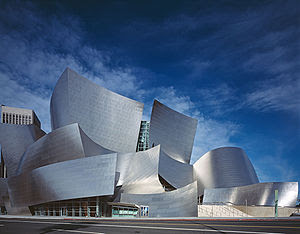 ANGELENOS don’t need to be told that they live in one of the nation’s best cities for classical music, but it may still be news to much of the rest of the world.
ANGELENOS don’t need to be told that they live in one of the nation’s best cities for classical music, but it may still be news to much of the rest of the world.
On that count, I wrote a piece for the fall issue of Listen, the classical music magazine, that looks at the Los Angeles Philharmonic, Hollywood Bowl, local chamber music series, and oddball programs like Classical Underground.
The whole story is not online, but I encourage everyone to pick up the new issue, which has pianist Maurizio Pollini (!!) on the cover. There’s also a very fine piece on how the city of Louisville reinvigorated itself during the torpor of the Great Depression – and after a major flood, no less — with the creation of the Louisville Orchestra. (It’s timed to a new documentary, Music Makes a City, which could have easily served as the title of my article about L.A.)
Here are a few sentences that begin my article:
Los Angeles is the heavenly chime of the Byrds, the woodsy self-absorption of Laurel Canyon, the horn counterpoint of Gerry Mulligan and Chet Baker, the boy-girl nihilist crunch of X, the rhythm-driven rage of gangsta rap.
 These are some of the high points: The city, which is regularly and gleefully destroyed in disaster movies, has also long symbolized everything ephemeral and cheap in popular culture and pop music.
These are some of the high points: The city, which is regularly and gleefully destroyed in disaster movies, has also long symbolized everything ephemeral and cheap in popular culture and pop music.
But other sounds have come from – and to – this place. John Cage grew up here. Stravinsky and Schoenberg lived here for years, as did thousands of German-speaking intellectuals fleeing fascist Europe, keeping alive a powerful literary tradition and sustaining an audience for chamber music.
And while neither the local orchestra nor the opera are as old as those in our sometimes-stuffy elder brother San Francisco, these operations have often been livelier and less predictable.

I love reading the anecdotes about Erik Korngold and Arnold Schoenberg playing tennis in LA … a musical odd couple, but two guys who appreciated the weather there!